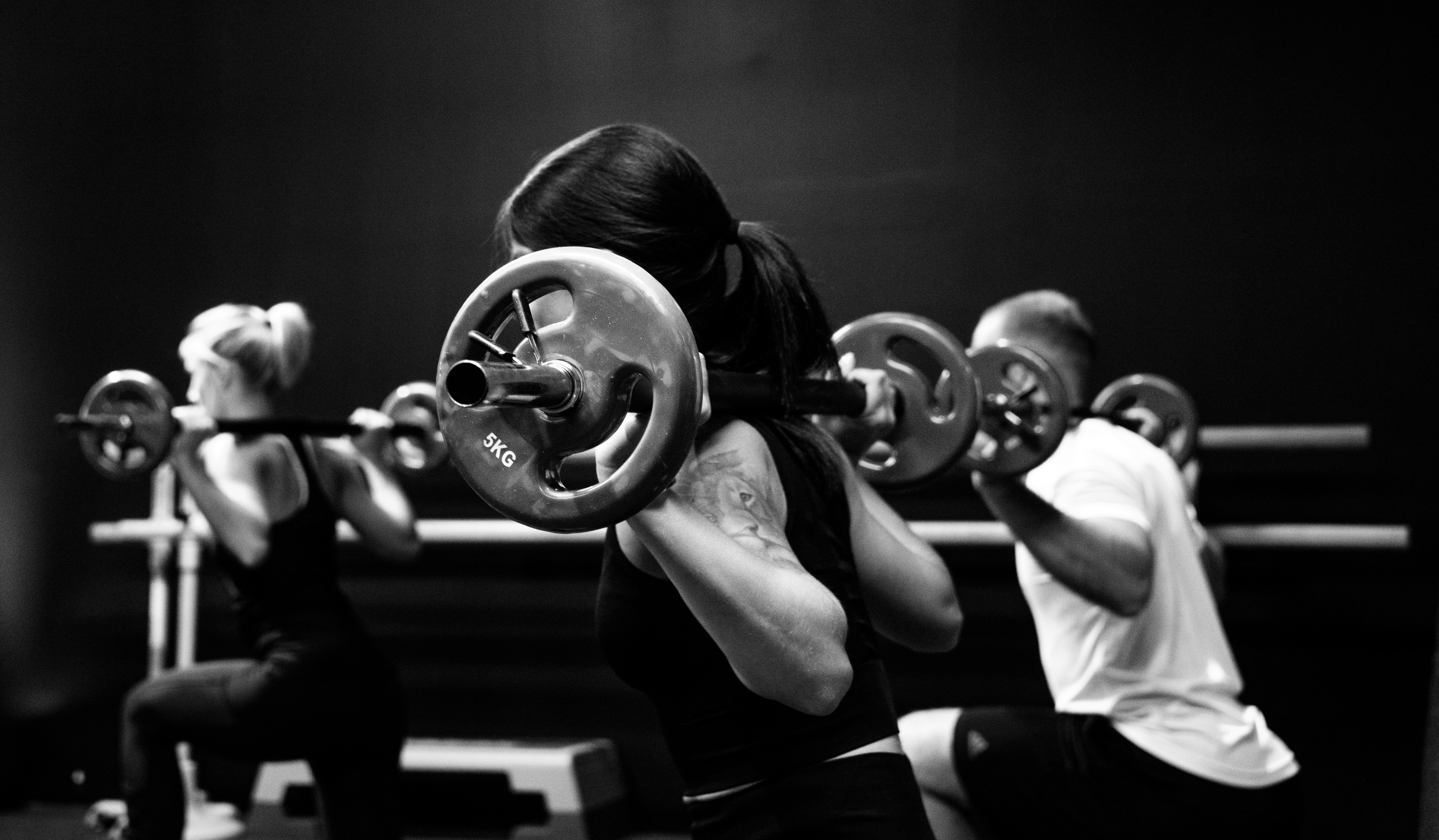This article was written by Mark Laws at Future Fit Training
Many individuals aspire to increase their physical strength without necessarily adding significant muscle mass. Whether it’s for athletic performance, weight management, or personal preference, there are methods to achieve greater strength gains without substantial muscle growth. This blog will explore how to get stronger, the possibility of increasing strength without getting bigger, and whether it is possible to simultaneously build muscle and burn fat.
How to Get Stronger:
Firstly, let’s dissect the fundamentals required to increase strength…
- Progressive Overload: The key to getting stronger is consistently challenging your muscles. Gradually increase the resistance or intensity of your workouts over time. This could be achieved by adding more weight, increasing repetitions, or reducing rest periods.
- Compound Exercises: Focus on compound movements that engage multiple muscle groups simultaneously, such as squats, deadlifts, bench presses, and pull-ups. These exercises recruit a greater number of muscle fibres, promoting strength gains.
- Optimise Recovery: Allow sufficient time for your muscles to recover and adapt to the stress of your workouts. Aim for 7-9 hours of quality sleep, incorporate rest days, and prioritise proper nutrition to support muscle repair and growth.
Is It Possible to Get Stronger Without Getting Bigger?
Contrary to popular belief, it is indeed possible to enhance strength without a significant increase in muscle size. Strength gains are primarily determined by neurological adaptations, improved muscle fiber recruitment, and enhanced muscle coordination, rather than solely by muscle growth.
Muscle Density and Getting Stronger
Muscle density refers to the concentration of muscle fibres within a given muscle volume. By engaging in strength training exercises, you can enhance muscle density, leading to stronger muscles without substantial growth in size. Increased muscle density provides a foundation for improved strength and power output.
Simultaneously Building Muscle and Burning Fat: Myth or Reality?
The idea of simultaneously building muscle and burning fat, often referred to as “body recomposition” is a topic of interest for many fitness enthusiasts, but as always there are conflicting opinions to consider.
Is It Possible to Simultaneously Build Muscle and Burn Fat?
While it is challenging to accomplish significant muscle gain and fat loss simultaneously, it is indeed possible to make progress in both areas to some extent. The feasibility depends on various factors, including individual genetics, training experience, nutrition, and overall lifestyle.
Evidence For:
- Resistance training and protein synthesis: Engaging in regular resistance training stimulates muscle protein synthesis, leading to muscle growth. This process also increases the body’s metabolic rate, potentially aiding in fat burning.
- Caloric surplus and deficit cycling: Alternating between periods of slight caloric surplus (to promote muscle growth) and caloric deficit (to encourage fat loss) can allow for some simultaneous progress. This approach provides the necessary energy for muscle building while creating a calorie deficit to target fat stores during specific phases.
- Beginner and reconditioned individuals: Individuals who are new to resistance training or have had a training hiatus may experience initial muscle growth and fat loss simultaneously due to the body’s heightened response to exercise.
Evidence Against:
- Caloric restriction challenges: A significant caloric deficit required for fat loss may hinder optimal muscle growth, as sufficient energy availability is necessary for muscle protein synthesis.
- Genetic factors: Genetics play a role in an individual’s ability to simultaneously build muscle and burn fat. Some people may naturally find it easier to achieve this balance, while others may struggle due to genetic predispositions.
- Training experience: As individuals become more experienced in resistance training, it becomes increasingly challenging to achieve significant muscle growth without a dedicated caloric surplus, which may impede fat loss.
It is important to note that individual results may vary, and consulting with a qualified fitness professional or registered dietitian can provide personalised guidance based on specific goals and circumstances.
Achieving greater strength without significant muscle growth is possible through focused training and specific strategies. By implementing progressive overload, compound exercises, optimising recovery, and considering muscle density, individuals can increase their strength levels effectively.
Simultaneously building muscle and burning fat can be accomplished but there is evidence both for and against this occurring. Remember, consistency and patience are key on the journey to a stronger, more powerful you.
Discover our Strength and Conditioning courses to find out more: Strength & Conditioning Courses and qualifications | Future Fit Training
References
Fyfe, J. J., & Loenneke, J. P. (2018). Interpreting adaptation to concurrent compared with single-mode exercise training: some methodological considerations. Sports Medicine, 48(2), 289-297.
Gibala, M. J., Little, J. P., Macdonald, M. J., & Hawley, J. A. (2012). Physiological adaptations to low‐volume, high‐intensity interval training in health and disease. The Journal of Physiology, 590(5), 1077-1084.
Helms, E. R., Aragon, A. A., & Fitschen, P. J. (2014). Evidence-based recommendations for natural bodybuilding contest preparation: nutrition and supplementation. Journal of the International Society of Sports Nutrition, 11(1), 1-20.
Longland, T. M., Oikawa, S. Y., Mitchell, C. J., Devries, M. C., & Phillips, S. M. (2016). Higher compared with lower dietary protein during an energy deficit combined with intense exercise promotes greater lean mass gain and fat mass loss: a randomized trial. The American Journal of Clinical Nutrition, 103(3), 738-746.
Phillips, S. M., & Van Loon, L. J. (2011). Dietary protein for athletes: From requirements to optimum adaptation. Journal of Sports Sciences, 29(sup1), S29-S38.
Schoenfeld, B. J. (2010). The mechanisms of muscle hypertrophy and their application to resistance training. Journal of Strength and Conditioning Research, 24(10), 2857-2872.
Schoenfeld, B. J., Aragon, A. A., & Krieger, J. W. (2013). The effect of protein timing on muscle strength and hypertrophy: a meta-analysis. Journal of the International Society of Sports Nutrition, 10(1), 1-13.
This blog post was authored by Future Fit Training – a leading training provider, offering courses in nutrition, personal training and much more.
Header photo by Sven Mieke


